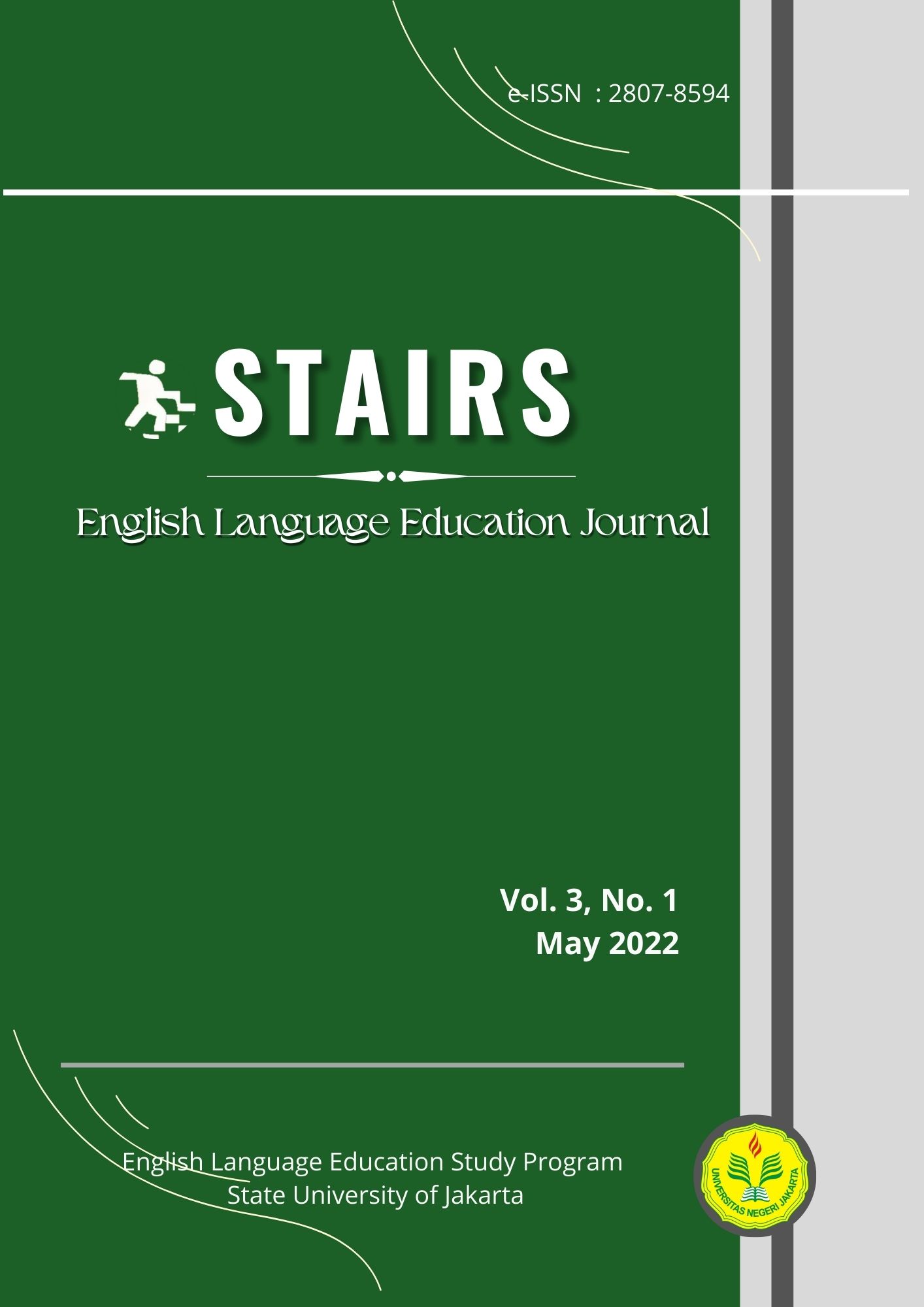Students’ Interest in Learning English through YouTube (A Case Study in Senior High School of Sekolah Alam Cikeas Bogor)
DOI:
https://doi.org/10.21009/stairs.3.1.2Keywords:
Students' Interest, Youtube, Learning EnglishAbstract
Technology advancement, including YouTube, enables various media easily integrated into the teaching and learning process and supports the students’ digital media literacy. However, in the implementation, some teachers find difficulties in engaging the students’ interest in using YouTube to support the teaching and learning process. This study was conducted to investigate why YouTube is considered the prominent media in Sekolah Alam Cikeas to engage students’ interest in English learning. A case study was used to analyze the phenomenon while questionnaires and interviews were used in collecting the data. Likert scale was used to analyze the data by using 5 aspects. The result illustrated Strongly Agree as the dominant answer from students. YouTube can help them in learning English and it plays a useful and meaningful role in the learning process. Most of the students agree that the usage of YouTube in the classroom is appropriate and can engage students’ interest in learning English in the classroom. Besides, YouTube also can help students to train in digital media literacy. Thus, YouTube is one of the media that supports students’ interest to engage in the learning process.
References
Alwehaibi, Huda Omar and Princess Noura Bin Abdulrahman. (2015). The Impact of Using YouTube in EFL Classroom on Enhancing EFL Students Content Learning. Journal of College Teaching & Learning Volume 12, Number 2.
Creswell, J.W. (2008). Educational Research Planning, Conducting, and Evaluating Quantitative and Qualitative Research. New Jersey: Pearson Education, Inc.
Duffy, P. (2008). Using YouTube: Strategies for Using New Media in Teaching and Learning. Enhancing Learning through Technology, pp. 31-43.
Harackiewicz, J. M., Barron, K. E., Tauer, J. M., Carter, S. M., & Elliot, A. J. (2000). Short-term and Long-term Consequences of Achievement: Predicting Continued Interest and Performance over Time. Journal of Educational Psychology, 92, 316–330. DOI: 10.1037=0022-0663.92.2.316.
Higgin, Tanner. (2018, February 5). How to Use YouTube Video Essays in the Classroom. Retrieved from https://www.kqed.org/mindshift/50468/how-to-use-youtube-video-essays-in-the-classroom.
Kohle, Fritz & Cueva, Arleen. (2010). A Case Study in Using YouTube and Facebook as Social Media Tools in Enhancing Student-Centered Learning and Engagement. 3rd International Conference of Education, Research and Innovation, At Madrid, Volume: Pages: 3596-3601.
Lakhal, M. (2021). Social Media Use and Its Effects on Writing Ability among Moroccan University EFL Students. International Journal of English Literature and Social Sciences (IJELS), Vol. 4, Issue 3.
Linvill, D. L. (2014). Student Interest and Engagement in the Classroom: Relationship with Student Personality and Developmental Variables. Southern Communication Journal 79(3): 201-214.
Oddone, Christine. (2011). Using Videos from YouTube and Websites in the CLIL Classroom. Studies about Language no 18.
Rotgans, J., & Schmidt, H., (2011). Situational Interest and Academic Achievement in the Active Learning Classroom. Learning and Instruction, Vol. 21, Issue 1, pp. 58-67.
Schunk, D. H., Pintrich, P. R., & Meece, J. L. (2008). Motivation in Education. Theory, Research, and Applications. Upper Saddle River, NJ: Pearson Education, Inc.
Stognieva, O. (2019). Teaching Business English with TED Talks: Putting Ideas into Practice. Journal of Language and Education, 5(2), 95-111.
Tin, Bee Tan. (2016). Stimulating Students’ Interest in Language Learning. London: Palgrave Macmillan.
Weber, K. (2003). The Relationship of Interest to Internal and External Motivation. Communication Research Reports, 20, 376–383. DOI: 10.1080=08824090309388837.



